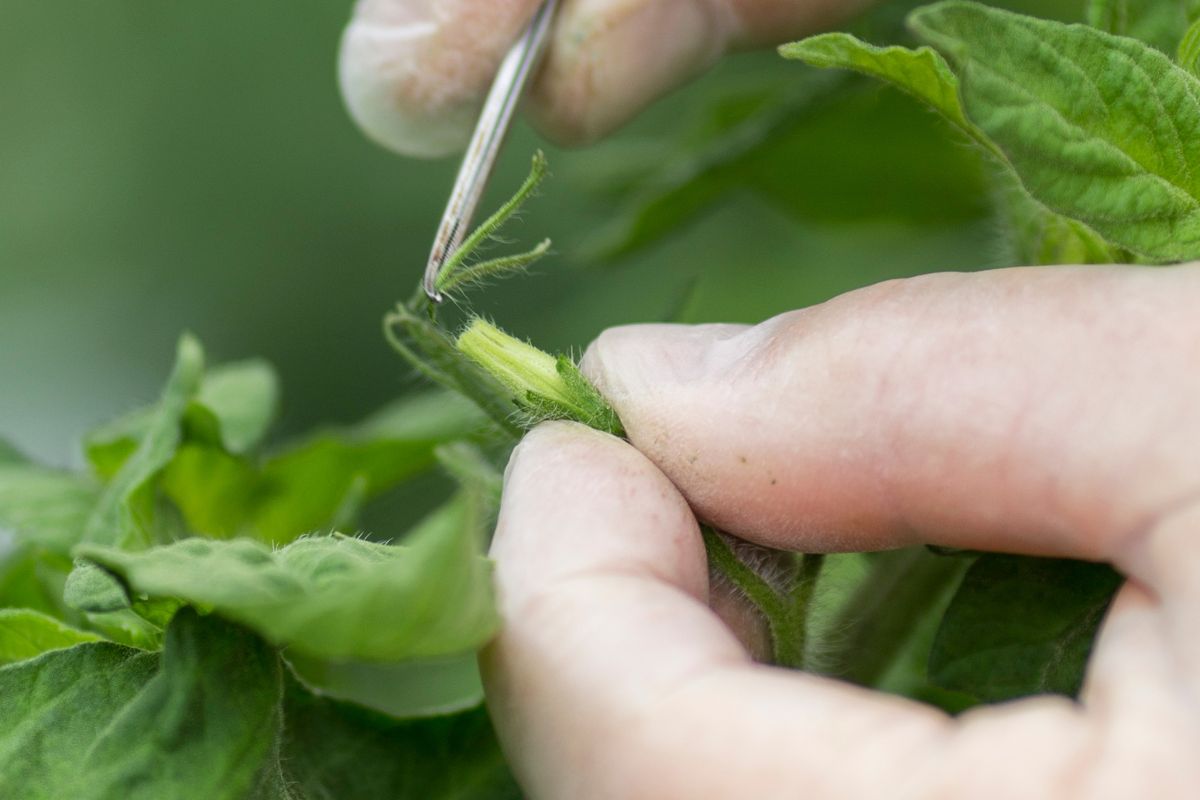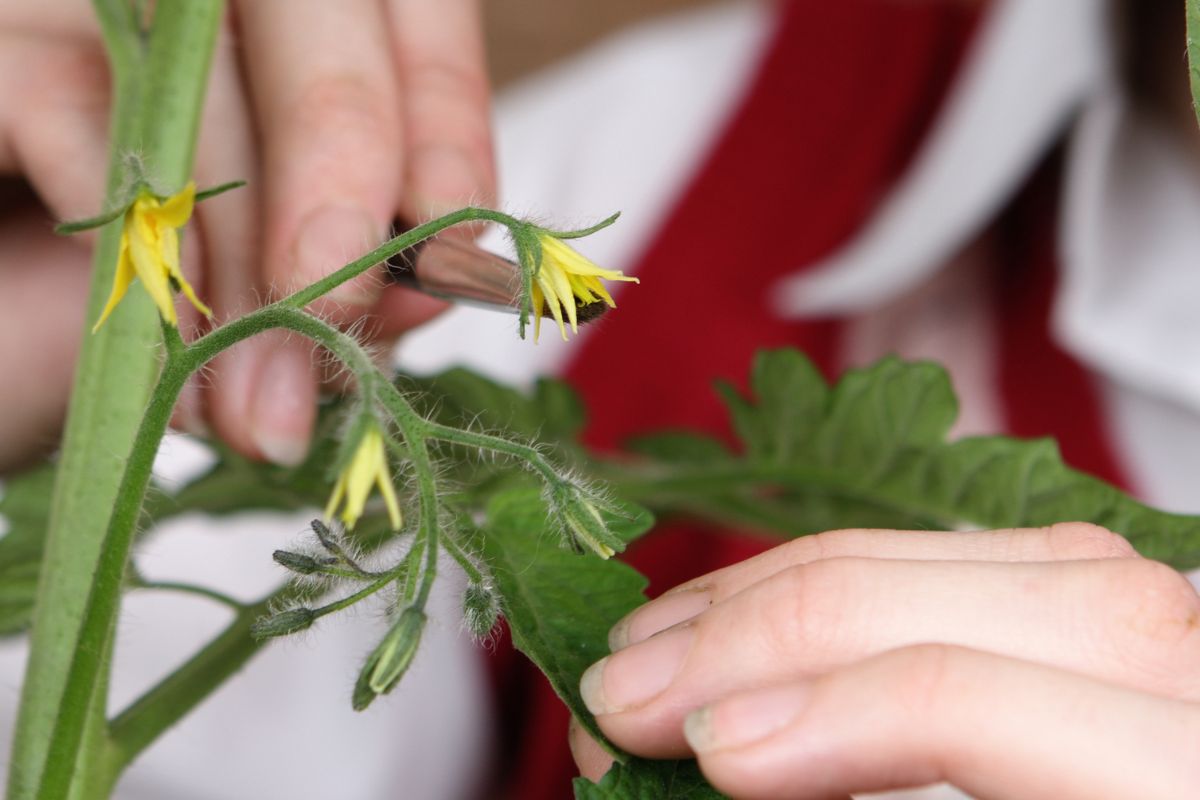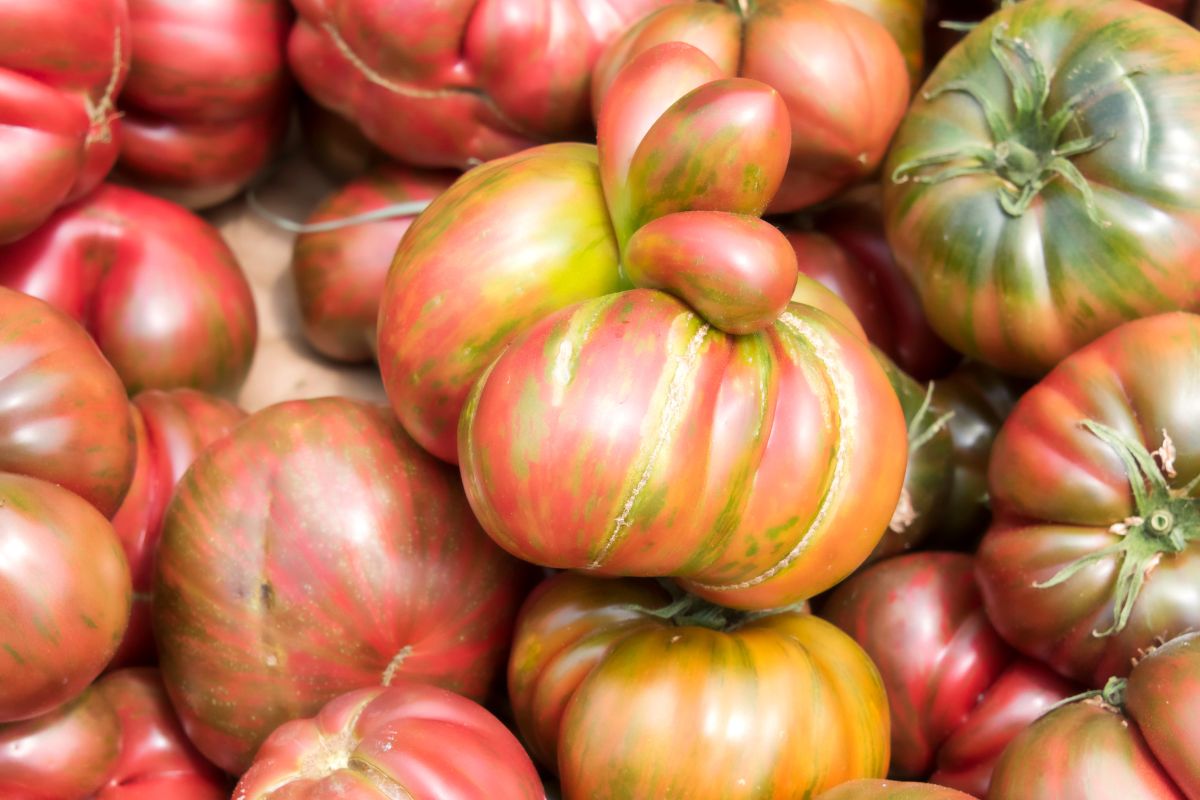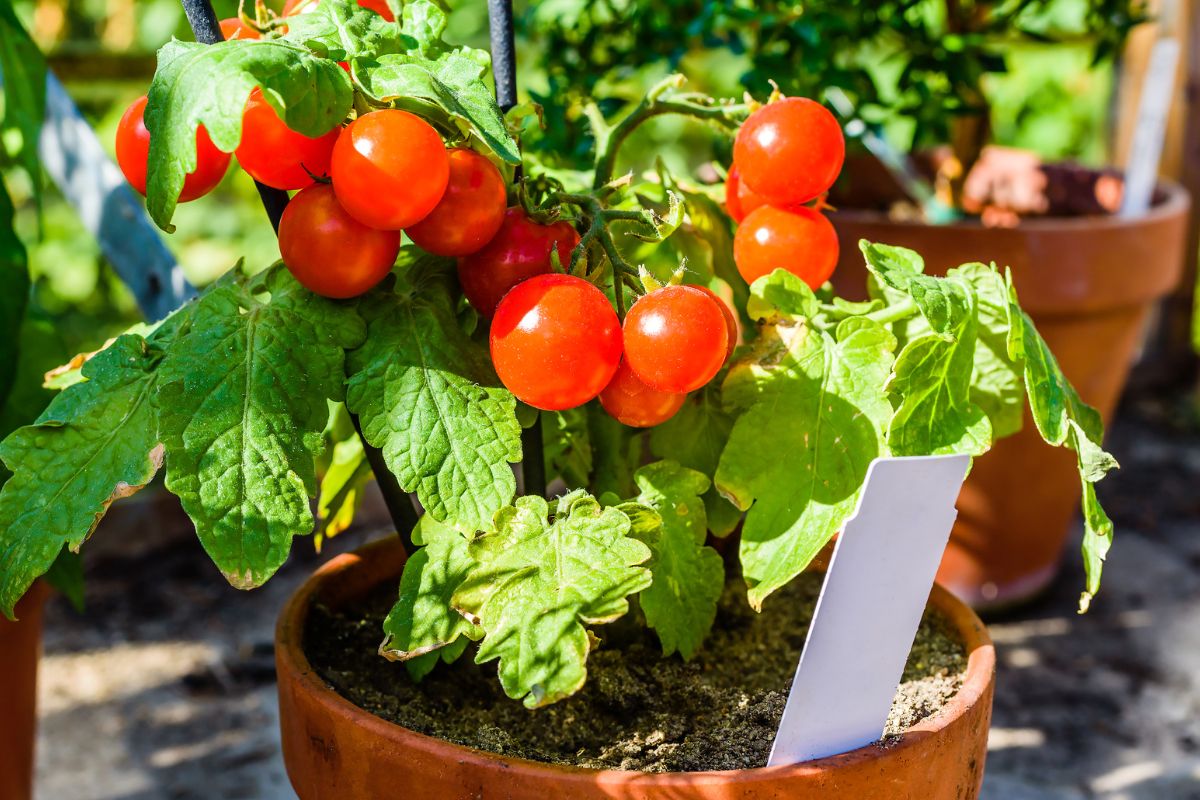Do you have a favourite tomato but wish it had a better texture? Maybe a little sweeter? Or what if that tomato ripened a little bit earlier to better suit the microclimate in your garden?
Why not breed your own unique variety, so you can have a truly “perfect” tomato!
By taking the pollen from one tomato flower (sometimes called the “father”) and using it to pollinate a flower from a completely different tomato variety (or the “mother”), you can combine the traits of both into a new tomato.
If you think plant breeding is for specialised growers and scientists, read this comprehensive and easy-to-follow guide on how to breed tomatoes in the home garden.
Breeding Your Own Tomato Varieties
Growing wild in the Andean mountains, tomato vines were first tamed by the Incan and Mayan cultures. After spreading through Europe in the 15th Century, tomatoes underwent intense domestication to give us the incredible shapes, sizes, colours, and flavours we enjoy today by crossing two or more varieties together.
The tomatoes we grow have been bred for years (sometimes centuries) by crossing two or more varieties together to create a perfect and stable cultivar.
You can create an entirely new tomato in your own garden by:
- Using the male parts from one tomato flower to pollinate the female part of the flower from a completely different variety. The two varieties will combine to create a new tomato that (hopefully) enhances the desirable characteristics of both. This new tomato is called a crossbreed, or hybrid.
- Save the seeds from your hybridised tomatoes to plant in your garden next year. When planted, these seeds will grow tomatoes that contain traits of both parent varieties. Some of these new tomatoes might not be much different from the parents, others might have undesirable characteristics, but some will have the traits you are looking for.
- Continue to save and plant seeds from tomatoes with desired characteristics. Over time, you will produce tomatoes that are more like you want, until you finally have a stable new variety.
While you can easily cross breed any flowering plant in your garden, tomatoes are especially easy to do because they:
- Are easy to hand pollinate
- Produce lots of seeds (sometimes several hundred from a single tomato)
- Have countless variations in colour, shape, size, and flavour with which to experiment
Anatomy of a Tomato Flower
Tomato flowers are bisexual, meaning they contain both male and female reproductive parts. Before you start breeding tomatoes, it is important to understand some of the basic parts of a tomato flower and what they do:
- Sepals: look like green petals and protect the flower before it opens
- Petals: the yellow petals attract pollinators to the flower (even though they are self-pollinating, tomatoes need the buzzing of a bee’s wings to get things going)
- Stamen: the male part of the flower that contains the pollen (they form a protective cone over the female parts)
- Pistil: the female reproductive part of the flower
When pollen is transferred from the stamen to the pistil the flower becomes fertilised, and the tomato starts to grow. In nature, most tomatoes are self-pollinated, which means the pollen transfer occurs inside the same flower.
When we cross breed a tomato, we take pollen from one flower and transfer it to a completely different variety. Here’s how to do this:
1. Determine Your Breeding Goals
The first step is to ask yourself what kind of tomato you want to get out of the breeding process. You can breed a tomato that is perfectly suited to your microclimate, disease or insect resistant, or drought tolerant. You can breed to produce fruit that ripens earlier, for a different plant size or shape, fruit colour or maybe even unique patterns. You may want to breed a particular size of fruit, or one with a different texture or flavour. You may want to do it as a science experiment, or maybe you want to try and breed tomatoes just for the fun of it!
2. Choosing Parent Plants
Once you know what traits you want the new tomato variety to have, you can select parent varieties that suit your goals. For example, if you have a great tasting tomato but it takes a bit too long to mature, you can cross breed it with a variety that matures faster.
When choosing parent varieties, it is particularly important to choose tomatoes that are open pollinated rather than hybrids. Open pollinated varieties produce seeds that are true-to-type. This means that if you grow a tomato, harvest the seeds, and then plant them, they will grow into tomatoes very similar to the parent plants.
Hybrid varieties are when two varieties are cross pollinated with each other. The tomatoes themselves might be excellent, but if you harvest and grow the seed, you never know what you might get.
3. Breeding Your Tomatoes
Spring is usually the best time to breed tomatoes so they will have the entire growing season to mature. However, autumn is also an acceptable time if you live in a locality where you can grow tomatoes year-round. Avoid breeding your tomatoes in summer, as hot temperatures over 35°C can cause tomatoes to drop their flowers and your hard work will be wasted.
Once you have your tomatoes picked out, it is time to cross pollinate the flowers and begin the breeding process:
- Choose which variety will be the female (mother) and which will be the male (father). Many breeders have preferences to determine this, but it won’t make much difference to the breeding process.
- Prepare the mother flower. Choose a flower on the mother plant that is well developed, just starting to turn yellow, but not open yet (if the flower is open, it has likely already been pollinated). Open the flower, and using a pair of tweezers, remove the male stamens (a process referred to as emasculation) to prevent self-pollination.
- Wait 24 to 36 hours for the female parts to become receptive. It is important to isolate your flowers at this time (see below) to make sure they don’t get pollinated by a passing bee.
- Find a fully mature (open) male flower on the father plant. Gather pollen from the male (paintbrush or pluck flower) or collect pollen into a cup/dish. Open the staminal cone.
- Pollinate the mother flower by hand. One way to do this is to gently rub a paintbrush inside the father flower to gather the pollen, and then gently brush the pollen onto the tip of the pistil (called the stigma). Or you can snip off the entire father flower and gently rub it inside the mother flower.
- It is a good idea to pollinate several flowers in case one of them fails to grow. It is also important to clearly mark which flowers on the mother plant you pollinated as it will be almost impossible to remember at harvest time. A great way to mark the flowers is to hang a small tag from the stem that shows the varieties of both parents.
4. Isolation
It is important to isolate the flowers to avoid cross-pollination from another tomato that would interfere with your careful breeding efforts. Isolate the flowers the mother plant while you are waiting for flower to become receptive and after pollinating.
You can isolate your flowers by:
- Removing the petals. While this might not look pretty, it will not hurt the developing tomatoes, and it will reduce the chance of pollinators from visiting the flower.
- Removing nearby flowers: This reduces the chance of cross pollination.
- Fruit protection bags: Covering the flowers with fine meshed bags will keep away pollinators and is the most effective way to prevent cross pollination. The bags can be removed as soon as the tomatoes begin to grow.
5. Save the Seeds
Pick your tomatoes once they are fully ripe and remove the seeds – you can eat the rest of the tomato! If this is your first time harvesting tomato seeds, you can read how to do it in our Seed Saving Guide. Once the seeds are dry, store them in paper bags until you are ready to plant next year.
6. Stabilising Your Tomato Variety
When the next planting season comes around, the excitement begins as you plant the tomato seeds and watch your carefully bred tomato variety grow. The new variety can display characteristics of either parent or produce a surprising result. Sometimes the results are not so desirable and you may need to start the breeding process again, but through trial and error, and dedicated pollinating, you can produce a truly unique, and enjoyably new variety of tomato.
At the end of the second year and each following year, save seeds from the tomatoes that match your desired goals. By growing and evaluating the offspring of your tomatoes over the years, you will be able to produce a successful and stable new cultivar.
***
Breeding tomatoes might seem a bit finicky, but it is an incredible experience. Above all, it is a waiting game that requires patience and dedication to produce long-lasting results. But even if you only do it for a year, you will produce a tomato that is as truly unique as the gardener who grew it.









